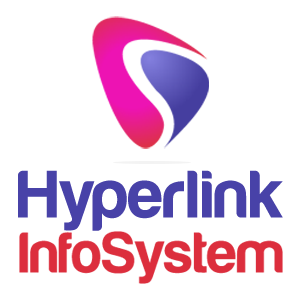
With millions of mobile apps competing for attention, keeping users engaged is a challenge. A well-optimized app encourages users to return, interact frequently, and remain loyal over time. By improving user experience, leveraging personalization, and using engagement driven strategies, you can increase retention and build a successful app. In this guide, we’ll explore the best practices for optimizing your app to ensure users stay engaged and keep coming back.
User engagement measures how actively users interact with your app and its web development features, while retention tracks how many users return over time. High engagement leads to better retention, reducing churn rates and increasing user lifetime value. Studies show that 25% of users abandon an app after a single use, making engagement a key factor for long-term success.
A complicated onboarding process discourages users from continuing. Ensure your onboarding is:
- Concise: Limit the number of steps.
- Interactive: Use tooltips, guided walkthroughs, or short tutorials.
- Value-driven: Highlight key benefits instead of just features.
A smooth onboarding experience increases retention by helping users understand the app’s value quickly.
A clean, user-friendly interface encourages interaction. To improve UI/UX:
- Ensure simple navigation: Users should find what they need with minimal effort.
- Keep design elements consistent: Use uniform fonts, colors, and buttons.
- Optimize for different devices: Ensure seamless performance across screen sizes.
Apps with great UX, like Instagram and Spotify, keep users engaged with visually appealing and easy-to-use interfaces.
A slow or buggy app leads to high uninstall rates. To enhance performance:
- Reduce load times to under 3 seconds.
- Minimize crashes and bugs with regular updates.
- Optimize battery and data usage to prevent excessive drain.
Studies show that 53% of users abandon an app if it takes longer than 3 seconds to load.
Customizing the app experience increases user engagement. Use:
- AI-driven recommendations based on user behavior.
- Personalized notifications that add value.
- Adaptive UI elements that fit individual user preferences.
Apps like Netflix and Amazon personalize content, increasing user retention.
Push notifications can drive engagement, but overuse leads to uninstalls. Follow these best practices:
- Make them relevant: Tailor messages based on user activity.
- Time them well: Avoid sending notifications at odd hours.
- Keep them actionable: Provide clear benefits or calls to action.
Well-timed, personalized push notifications boost app re-engagement.
Gamification makes your app more interactive and enjoyable. Try:
- Badges and achievement rewards for completed actions.
- Point-based reward systems to encourage app usage.
- Leaderboards to create friendly competition.
Fitness apps like Fitbit use gamification to motivate users to stay active.
Loyalty incentives encourage users to stay engaged. Popular methods include:
- Discounts or perks for frequent users.
- Referral bonuses for inviting friends.
- Exclusive content for loyal users.
Uber and Airbnb successfully use referral programs to drive user retention.
Understanding user needs helps improve app performance. Effective methods include:
- In-app surveys for direct feedback.
- App store reviews to identify pain points.
- Feedback forms for reporting issues.
Companies like Airbnb continuously enhance their apps based on user feedback.
Testing different versions of your app helps identify what works best. Test:
- Different onboarding flows.
- Button placements and CTAs.
- Notification timing and content.
Regular A/B testing ensures your app evolves based on real user preferences.
A well-optimized app store listing improves visibility and downloads. Key ASO strategies include:
- Use relevant keywords in the title and description.
- Add high-quality screenshots and videos.
- Encourage positive reviews and ratings.
App Store Optimization (ASO) boosts organic downloads and long-term engagement.
Providing instant assistance enhances user experience. Use:
- AI-powered chatbots for 24/7 support.
- In-app FAQs and knowledge bases.
- Human support integration for complex issues.
Quick and effective support reduces frustration and increases retention.
Users appreciate apps that work even without an internet connection. Optimize by:
- Allowing access to key features offline.
- Syncing data when the device reconnects.
- Using lightweight storage options for efficiency.
Apps like Google Docs allow offline editing, improving user engagement.
A strong community encourages long-term engagement. Build a community by:
- Adding discussion forums or social features.
- Hosting challenges, events, or live sessions.
- Encouraging user-generated content and reviews.
Apps like Strava and Reddit thrive by fostering active user communities.
Users expect seamless transitions across devices. Ensure:
- Data sync between mobile, tablet, and desktop versions.
- Cross-platform accessibility via cloud-based solutions.
- A unified experience regardless of device type.
Apps like Spotify and Evernote allow users to switch devices effortlessly.
Understanding user interactions helps refine your app. Use:
- Heatmaps to identify popular or ignored features.
- Funnel analysis to track where users drop off.
- Real-time analytics to measure engagement trends.
Using tools like Google Analytics or Mixpanel helps you make informed improvements.
Optimizing your mobile app for engagement and retention requires a mix of intuitive design, personalization, strategic notifications, and continuous improvements. By focusing on user experience, leveraging feedback, and refining app performance, you can keep users coming back. Implement these strategies today to maximize your app’s success!
Key metrics include session length, daily active users (DAU), and feature usage rates.
Common reasons include slow performance, poor UX, excessive ads, and lack of useful features.
Regular updates (every 2-4 weeks) help fix bugs, improve performance, and keep users engaged.
Yes, when used strategically. Personalized and well-timed notifications encourage re-engagement.
Gamification makes the app more interactive through challenges, rewards, and competition, increasing user motivation.
